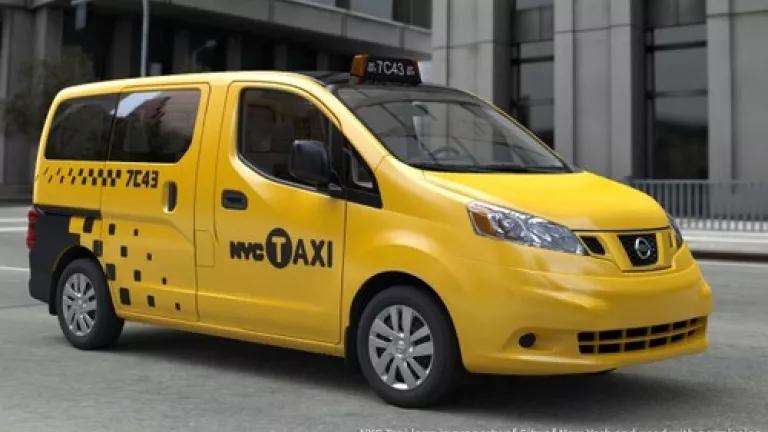
Nearly seven years ago, the first hybrid yellow taxis rolled onto the streets of New York City as part of an effort to improve fuel economy and reduce emissions. Today, about 5,000 of these cleaner, greener taxis—nearly 40 percent of the total fleet—are in operation, working to cut air pollution, lower noise levels, and lessen our dependence on fossil fuels. The city’s hybrid taxi program was one of the first of its kind, and has served as a model of urban sustainability for other cities around the country.
But these cleaner cars could soon become obsolete when -- and if -- New York City’s new “Taxi of Tomorrow” hits the streets. Last spring, Mayor Bloomberg announced that the Nissan NV200 was the winner of the City’s Taxi of Tomorrow competition. And today in New York City, Nissan is scheduled to officially unveil the NV200 Taxi prototype, which is slated to become the new standard.
The initial NV200 vehicle design, despite safety and other enhancements, is a conventional, non-hybrid vehicle. Thus, based on air emissions and fuel efficiency, it is unquestionably a step backwards environmentally compared to the hybrids already on the road.
But all hope is not lost.
Concurrent with the introduction of the NV200s, the Taxi and Limousine Commission (TLC) will also launch a pilot program to test six all-electric Nissan LEAF cabs. And, as announced last year, one factor is choosing the NV200 was the prospect of Nissan’s ability to produce an all-electric NV200 by 2017. Indeed, Nissan is seeking to position itself internationally as the leading car manufacturer of electric cars.
As things now stand, however, the contract between Nissan and the City on the Taxi of Tomorrow fails to include clear language relating to the eventual manufacture of these cleaner vehicles. Further, we believe that details included in the current contract have the potential to actually block the introduction of strong hybrid or electric-only taxis into New York City’s fleet.
Removing the current hybrid taxis without ensuring that equally green, or greener electric taxis, could eventually take their place, would be an environmental loss for the city.
There is no question the NV200 is indeed an improvement over the iconic old-standard, gas-guzzling Crown Victoria, which averages a mere 14 miles per gallon. Mayor Bloomberg also deserves credit for notably promoting the use of hybrid vehicles in the city’s personal fleet.
But at the end of the day, introducing the non-hybrid Nissan NV200 without an opportunity to pivot down the road to strong hybrids and electric cabs would indicate that the promise of New York City’s taxi program as a sustainable leader may be fading.
Still, we remain hopeful that in their remaining negotiations, TLC and Nissan can still find a way to ensure that the final agreement offers a path forward to cabs that are class leaders in low emissions and fuel-efficiency.
This result would make the NV200 a true Taxi of Tomorrow.

